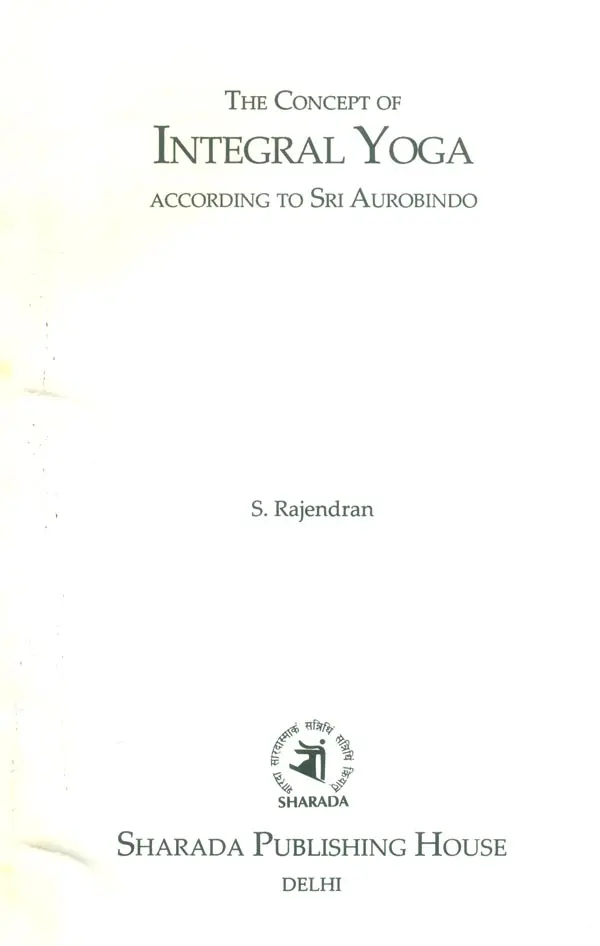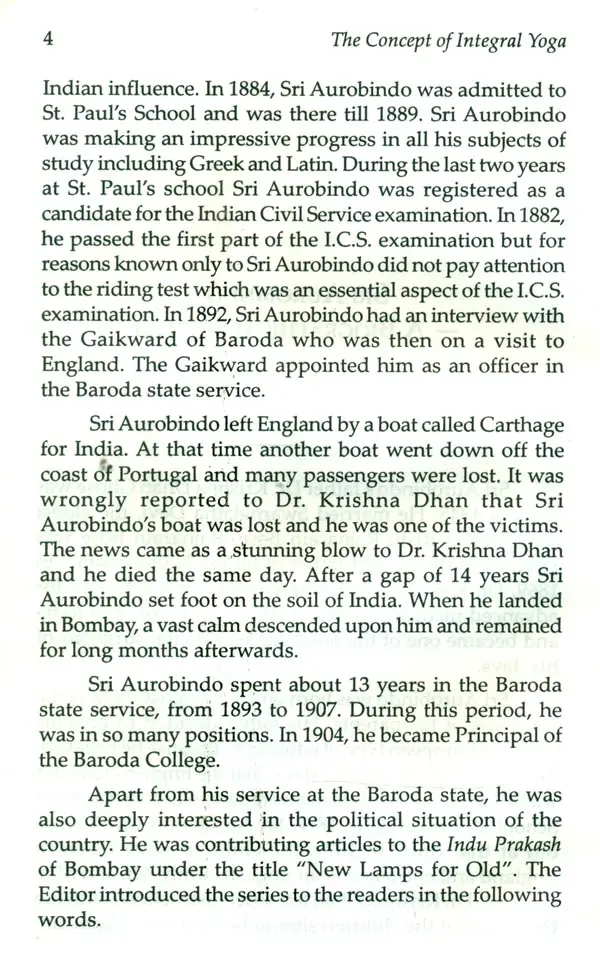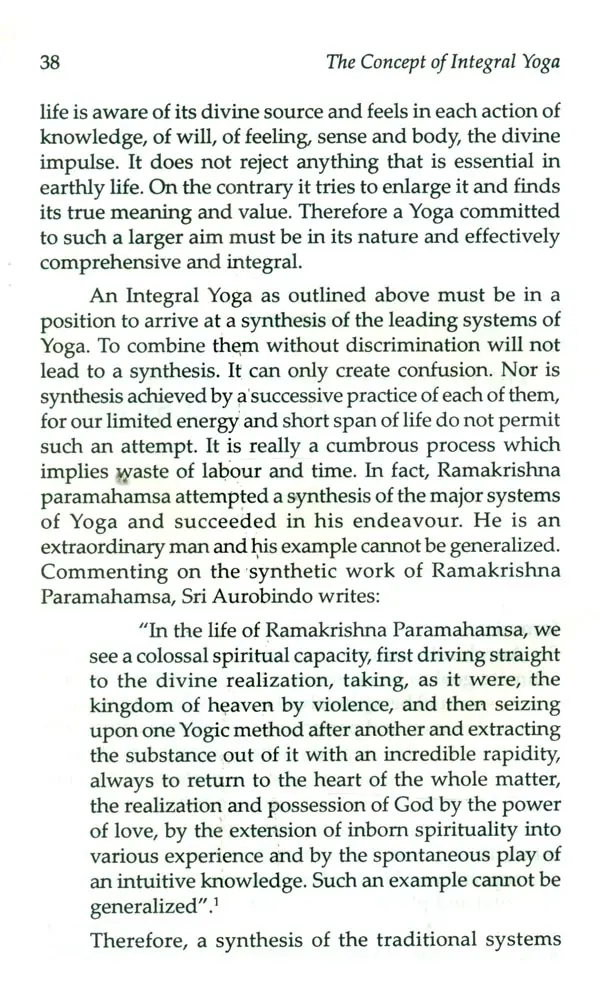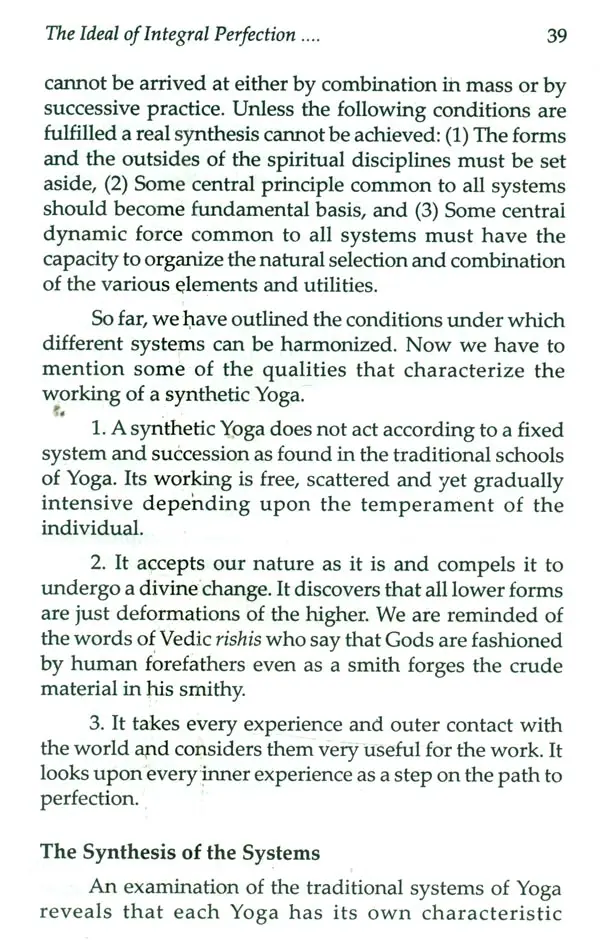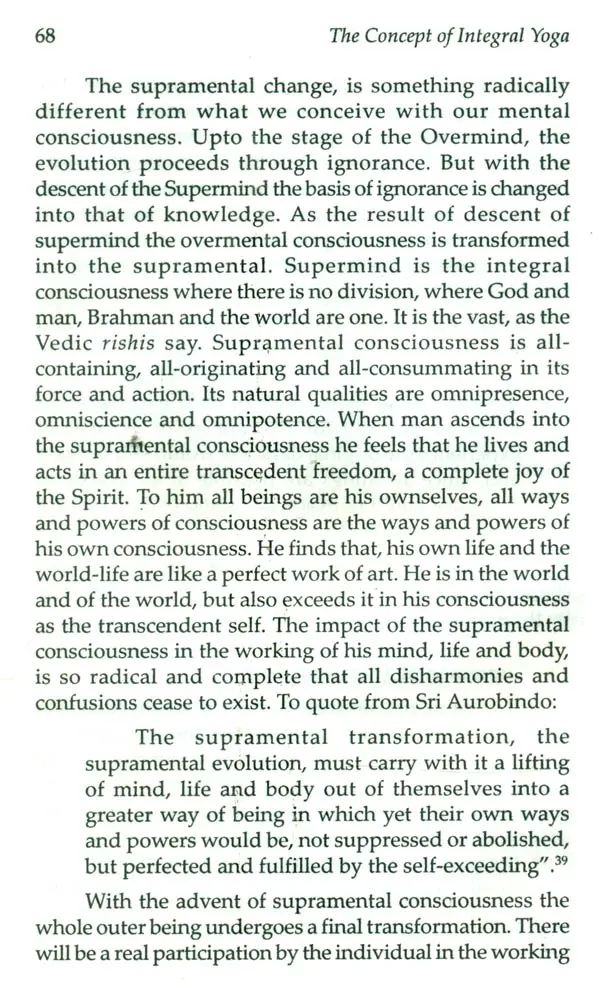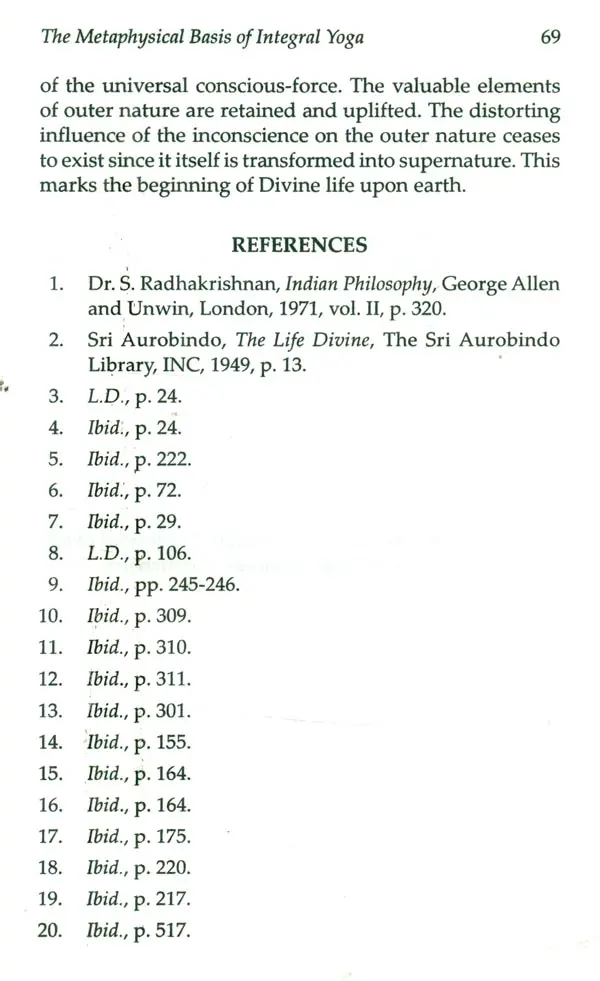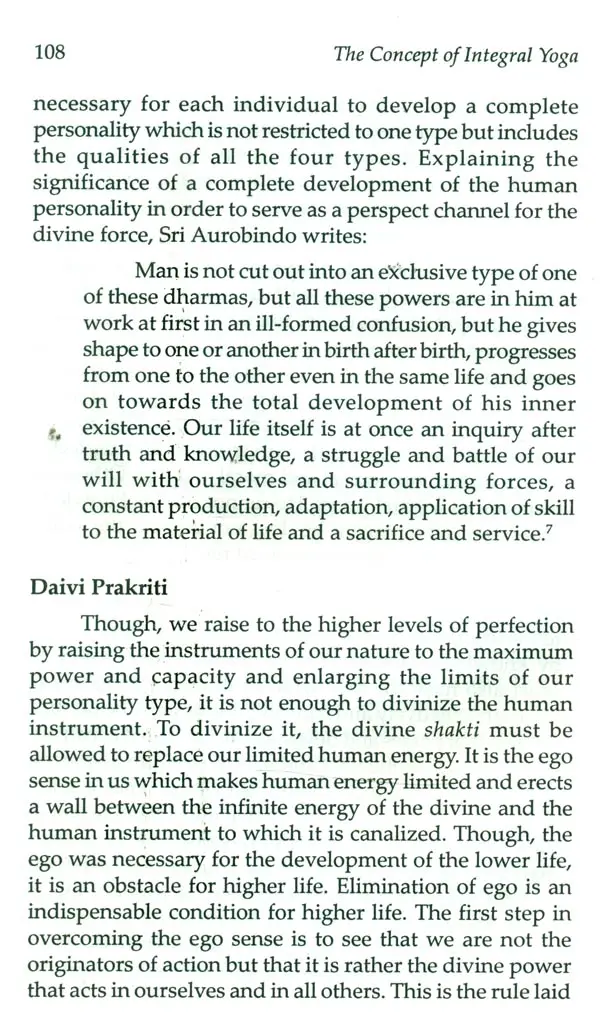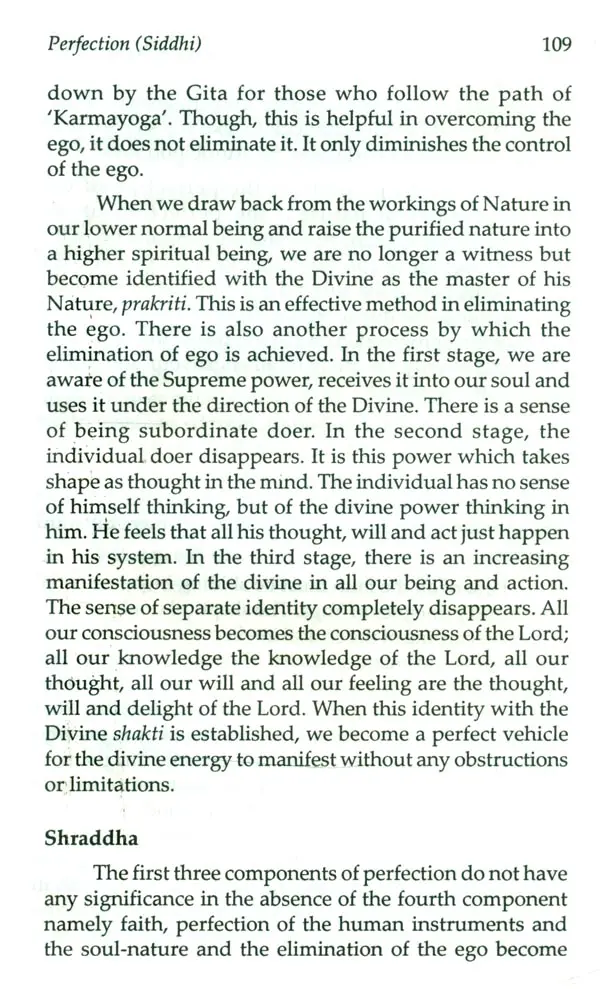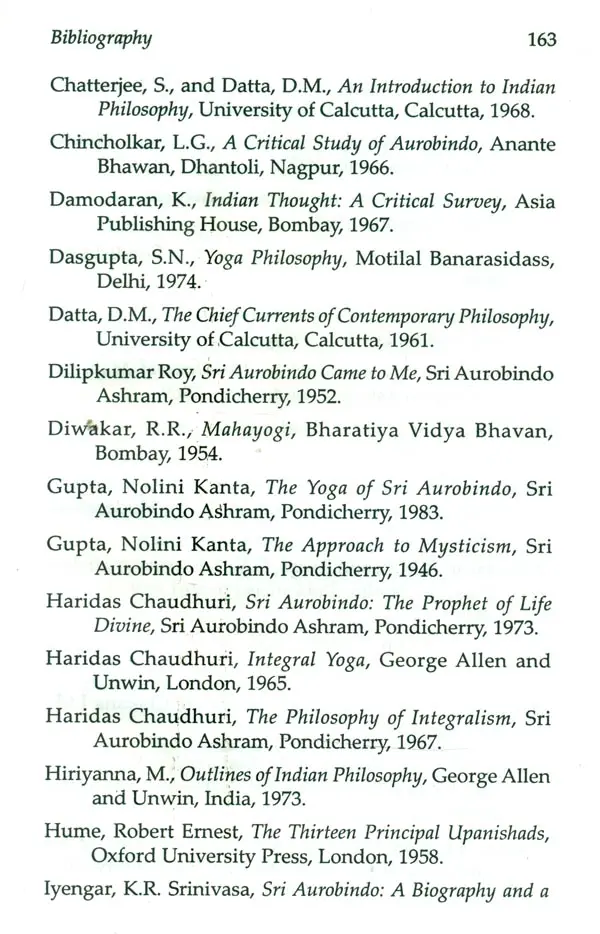
The Concept of Integral Yoga- According to Sri Aurobindo (An Old and Rare Book)
Book Specification
| Item Code: | UAE905 |
| Author: | S. Rajendran |
| Publisher: | Sharada Publishing House, Delhi |
| Language: | English |
| Edition: | 2011 |
| ISBN: | 9788188934782 |
| Pages: | 196 |
| Cover: | HARDCOVER |
| Other Details | 9.00 X 6.00 inch |
| Weight | 370 gm |
Book Description
The content is rich and the coverage is comprehensive. The exposition is very simple and direct. The general public will find it easy to understand the yogic perception of Sri Aurobindo.
Prof. S. Rajendran has really done a yeoman service in the cause of synthesis of yoga by reconciling the one sided approaches of traditional yogas.
My hearty good wishes and salutations to the author.
In 1986, he was awarded the degree of Doctor of Philosophy by the University for his thesis on Sri Aurobindo. After serving as Reader from 1988 to 1998 he was promoted as Professor of Philosophy. As the Head of the Department, he is doing his best for the academic pursuits by promoting research in the department.
As an editor, he has two books, 'The Isha and Other Upanishads (Essays in the Interpretation of the Isha and Other Upanishads)' and 'Isavasya Upanishad (Essays by Five Competent Scholars)' to his credit. He had conducted more than a dozen National and International seminars sponsored by UGC and ICPR (Indian Council of Philosophical Research), New Delhi.
So there are two aspects of Brahman, the transcendent and the imminent. To realize Brahman in the two aspects is the goal of human life. The Isha (verse 14) points out that by the dual realization (ubhayam saha) one crosses death (mrtyu) and attains immortality (amrtam asnute). In fact, this is the significance of all creation - texts in the Upanishads.
Sri Aurobindo is a Vedanta in who says that Brahman has descended into the world and become its inhabitant for the sake of manifesting Himself in the world and unfolding all. latent powers through evolution. The evolution started with Matter. Then it reached Life and Mind. Arid man is a product of the evolution of Mind from Matter. Now two options are open to him: (i) to realize the twofold Brahman and be satisfied with it; (ii) to go ahead from this point and manifest the immanent Brahman, in himself and the world, through further evolution.
The Vedanta of the Upanishads is satisfied with the first and does not pay attention to the second. Though this realization is good in itself, this is not the highest good for which man is eligible. Sri Aurobindo is the first Vedantin to invite us to go beyond the first option and arrive at the highest good by using the second option. To pass from Brahman to Brahman's purpose in the world is but a logical extension. Hence Sri Aurobindo's insistence upon reaching the highest good. He dedicated his whole life to this unique task. When we know that the immanent Brahman in Matter is the giver of the highest good, we do not speak ill of Matter but become a master who possesses and enjoys all hidden in Matter (annavan annado bhavati) (Taittiriya Upanishad, 3-7-1). If we are satisfied with the first option, then the goal can be realized through the yogas of works, knowledge and devotion. An isolated or a successive application of yoga is sufficient. If we desire to use the second option, the application of yoga must be "integral", otherwise the highest good cannot be realized.
Sri Aurobindo's integral yoga is the result of this attempt. Dr. Rajendran's work on the integral yoga of Sri Aurobindo is a good attempt. There are two merits to this work. First of all, it has established how Sri Aurobindo's integral yoga is derived from the metaphysics of integral Brahman. Secondly, it has proved how the components of integral yoga such as works (karma), knowledge (jnana) and devotion (bhakti) form a real synthesis by shedding their inherent limitations. Rajendran's expositions follow as closely as possible the original work, namely, "The Synthesis of Yoga II by Sri Aurobindo. Sri Aurobindo's yoga is new and a bold departure from the old yogas. These two features are well brought out by this work.
Though in the last three decades numerous books on Sri Aurobindo have been published by several exponents of his thoughts, not many on Sri Aurobindo's Integral Yoga have appeared so far. In 1953, a work entitled 'The Integral Yoga of Sri Aurobindo' by Rishabhchand was published by Sri Aurobindo Ashram, Pondicherry. This was followed by another book with the title, 'Founding the Life Divine' (An introduction to the Integral Yoga of Sri Aurobindo) by Morwenna Donnelly. This was published in 1956 by a New York based publishing company. In 1961 a book on 'Sri Aurobindo's Integral Yoga' by Tulsidas Chatterjee was published by a Calcutta based publisher. In 1965 Prof. Haridas Chaudhuri brought out a book on 'Integral Yoga' which was a publication of George Allen and Unwind Ltd. These four works, which serve at the moment as the well known expositions on Sri Aurobindo's Yoga.
A study of Sri Aurobindo's treatise on Yoga 'The Synthesis of Yoga', will abundantly make it clear how the system of Integral Yoga has been conceived and expounded by its author. The book has been divided into four major sections with an introduction which deals with the conditions necessary for a synthesis of the existing systems of Yoga in India. Part I of the book deals with the Yoga of Works; part II with the Yoga of Knowledge; and Part III with the Yoga of Devotion. They respectively carry the following titles, 'The Yoga of Divine Works', 'The Yoga of Integral Knowledge' and 'The Yoga of Divine Love'.
Part IV is a comprehensive exposition of the integral Yoga.
Book's Contents and Sample Pages
